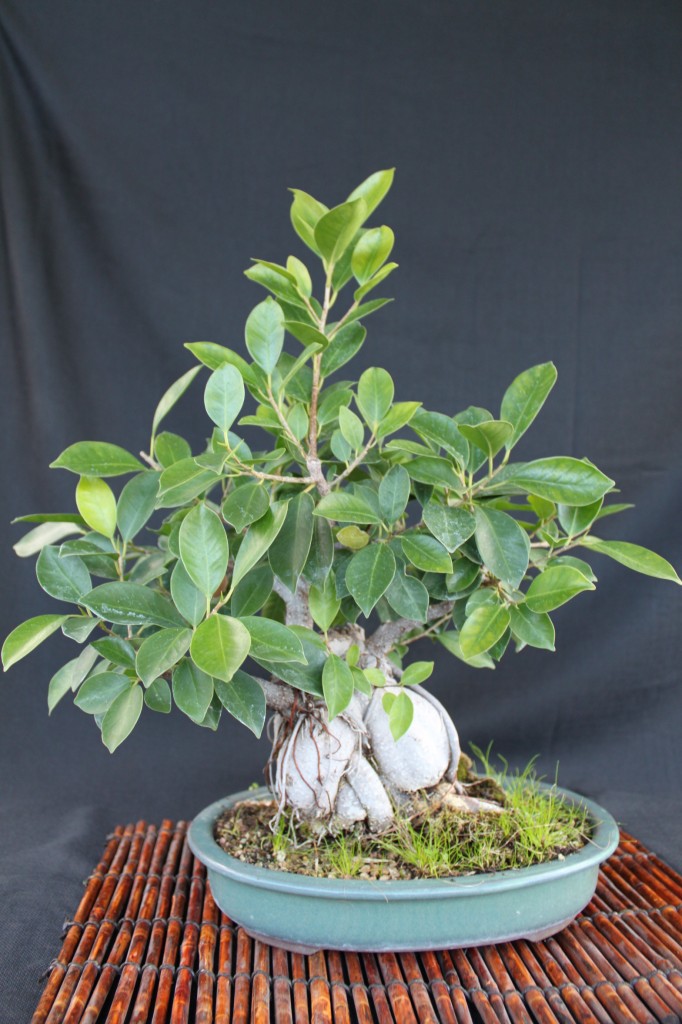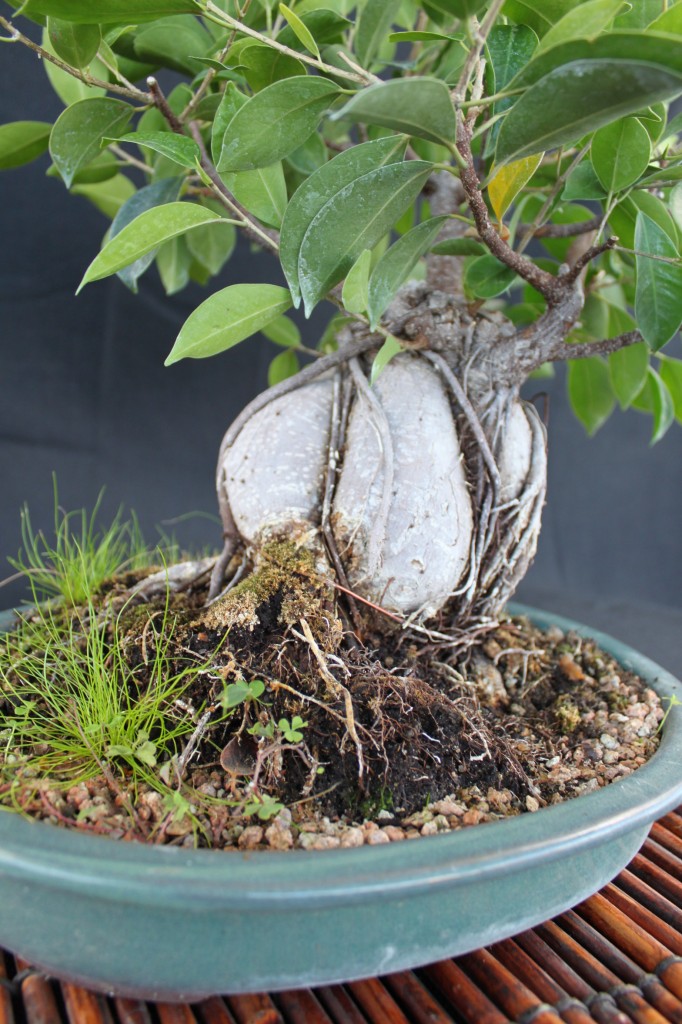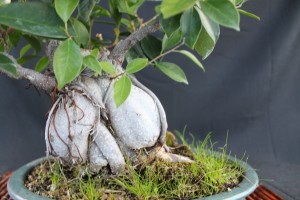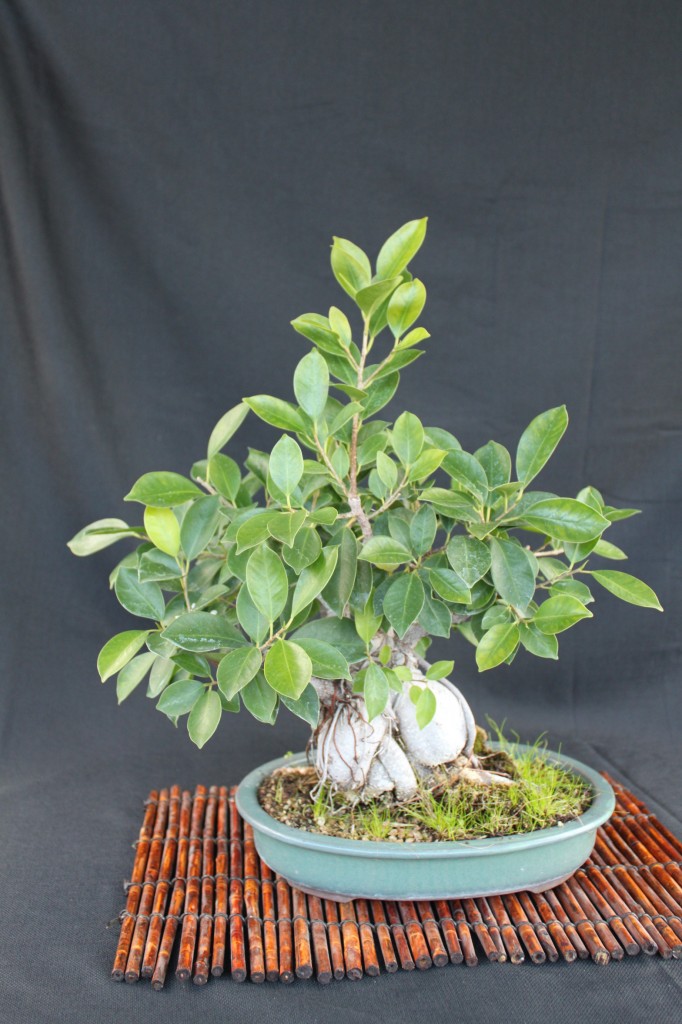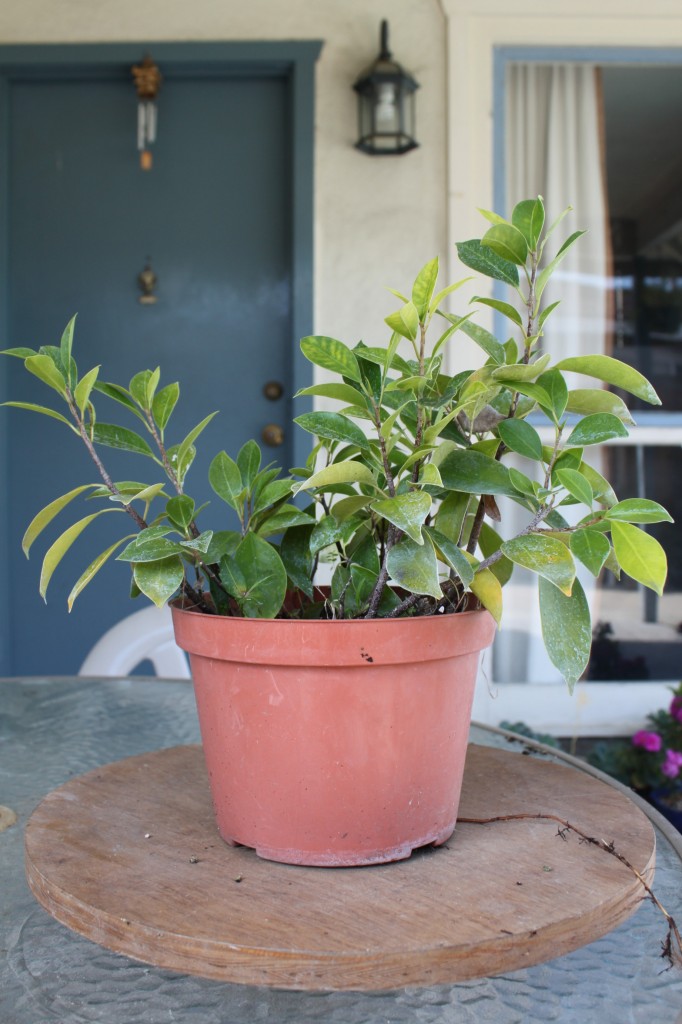Ginseng Ficus Bonsai
Ginseng Ficus Bonsai
You’ve seen them in stores, or online. Maybe you have always wanted a bonsai with a thick trunk, and this is the first time you’ve seen one at a reasonable price. Or maybe you are attracted by the ability to grow a bonsai indoors. But either you bought one and are wondering what you’ve gotten yourself into, or you are thinking about buying one and want to do some homework first.
Background: What is a Ginseng Ficus Exactly?
That is a good question. You’ve never seen one growing in anyone’s garden, have you? Well actually you may have, but you didn’t recognize it because it looked like a normal tree. Ginseng Ficus is a cultivar of Ficus Retusa. The “normal” form of Ficus Retusa is used in landscaping in California and in many tropical parts of the world, and Ficus Retusa bonsai is sold as “Tiger Bark” Ficus. The Ginseng form tends to form thick tuberous roots at ground level or just under the ground. The grower cuts off the upper part of the tree (which is why the thicker ones have a large pruning scar on top) and pots the tubers in a bonsai pot. A short flush of new growth appears on top, and voila, you have a bonsai – or something that looks like one. That is, except for the reverse taper at the base of the soil. No legitimate bonsai ever has a convex bulge above the soil line. So what do we do about that?
Where to Get One:
Unlike other trees used for bonsai, these are easy to find. A lot of the “big box” chain stores sell them. You can buy them online. They are mass produced in Asia, and shipped all over the world. The only questions are, how big a trunk do you want, how nice of a pot do you want, and how much are you willing to spend? Do you want more after you buy the first one? Prune it in warm weather. Take the cut off branches and stick them in a pot full of good bonsai soil. Put the pot in a warm, shady place. Wait a few weeks. The cuttings will take root. In fact, given enough time, they will send roots out the drain holes of the pot, looking for new places to take nutrition.
What To Do With It After You Get It:
First, remove the glued on rocks from the top of the soil. If there are no glued on rocks, then pull the tree out of the pot and inspect the roots and the soil. If the soil does not look like good bonsai soil, then repot it. Keep it outdoors if the weather is nice or if you live somewhere tropical, or with mild winters. If not, keep it indoors in a sunny window until the weather improves. If you have a small Ginseng Ficus and want a large bonsai, or if you really like aerial roots, repot it in a large pot or tub – and give it lots of humidity by keeping a dish of water nearby.
Potting and Soil:
Ficus trees like a little bit of room for their roots. If you buy a Ginseng Ficus bonsai, then in the first spring after you purchase it (or immediately if you purchase it in the spring) you should carefully remove it from the pot and check the condition of the roots. A lot of growers of these trees use pots that are too small for the tree in order to make the root swelling look more impressive or to save on shipping. For this reason it is usually a good idea to repot the tree into a slightly larger pot.
Ficus Retusa is not particular about soil, but for bonsai purposes you should mix up some good bonsai soil.
What is good bonsai soil? That is a matter for another article, but I will cover the basics here. Bonsai soil consists of two components: aggregate for drainage, and organic matter to supply nutrients to the tree. Aggregate can be decomposed granite, coarse sand, pumice, or fired clay pellets (you can use some kinds of cat litter or automotive spill absorbent). Most houseplant potting soils are 100% organic matter. They will provide the nutrients, but they drain very poorly. Ficus trees do well in a mix that is 60% aggregate and 40% organic matter.
You can repot the tree at any time of year – if you can find a warm, sunny place to keep it. If not, then wait for warm weather to repot it.
They should also receive supplemental fertilizer during the growing season. Most houseplant fertilizers will do the job, but the author’s preference is to use time release fertilizer pellets. Half a teaspoon to a teaspoon full will usually cover the needs of a small Ginseng Ficus for five or six weeks.
Watering: The soil mix described above is designed to be watered every third day or every other day, but experience is the best teacher. Most bonsai folks will stick a chopstick into the soil to see how much moisture there is before watering. Never let the tree completely dry out, but never let it get waterlogged either.
Siting:
If you are going to keep your Ficus indoors, it should be kept in a south facing window. Outdoors, it should be kept out of direct sunlight and sheltered from strong wind. A covered patio is best. Ficus trees also are not cold-hardy, and need to be protected from frost.
Pruning and Shaping – And About That Root Bulge:
Do not prune these trees while they are dormant. Prune them only during the growing season. When is the growing season? Depends on when you get your warm weather, and for how long. If the weather is eighty degrees or warmer, these trees will grow a lot, and fast, limited only by the amount of water and nutrients they can get their aggressive little roots on. Prune long shoots back to two pairs of leaves, and repeat the process as the tree grows in order to build density. Thinner branches can be shaped with wire. Unlike Ficus Benjamina, Retusas produce fairly stiff wood, and their branches will take a set after only one wiring.
But what about the fat root base? Some bonsai enthusiasts have sawed the root base off at the fattest part of the bulge, and stuck the top of the tree into the soil. This will produce a more bonsai like appearance, if you like. Alternatively, you can get creative with landscaping, and wedge some rocks into the concave part of the root base, in order to make the tree look like it is growing out from between the rocks – a natural reason for the trunk bulge.
In terms of shaping, the trunk bulge forces an informal upright style, or a banyan style if you can get the tree to produce some aerial roots around the base. Work toward a shallow triangle of foliage, and you are good. However, if you took some cuttings, you can produce a group planting, and then the possibilities become interesting.
Closing Remarks:
Ginseng Ficus is not considered by enthusiasts to be a true bonsai, even though it is sold as one to the uninitiated. However, Ficus Retusa has all the qualities to become a great bonsai. All it takes is a little knowledge and a little work. Take care of your little tree, and the tree will do the rest. Enjoy your bonsai!

